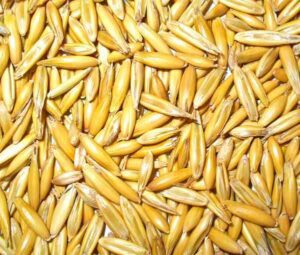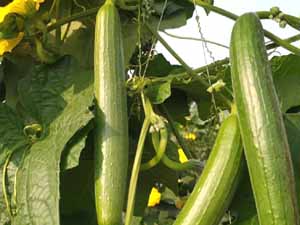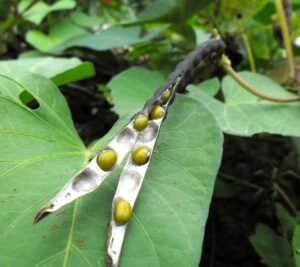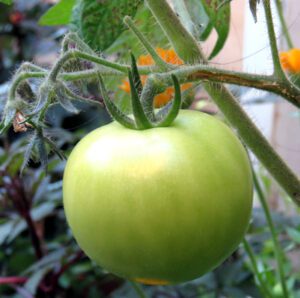Growing ricebean (or rice bean) is not too popular among the farmers, although it is a good crop to produce and it can make good profits.
The ricebean is regarded as a minor food and fodder crop and is often grown as inter-crop or mixed crop with cowpea, maize or sorghum.
The ricebean (Vigna umbellata) is actually a warm-season annual vine legume, with yellow flowers and small edible beans.
It is grown mainly as a dried pulse, but also important as a fodder, a green manure and a vegetable.
Growing ricebean is done mainly as an intercrop (particularly of maize). It is cultivated throughout Indo-China and extending into southern China, India, Nepal and Bangladesh.
The ricebean was widely grown as lowland crop in the past on residual soil water after the harvest of long-season rice.
But today it has been displaced to a great extent where shorter duration rice varieties are grown.
The ricebean plants establish rapidly and grows well on a range of soil types. And it has the potential to produce high quality grain and large amounts of nutritious animal fodder.
How to Start Growing Ricebean
Growing ricebean is relatively easy. You either start in small scale or in large scale, even if you are a complete beginner. Here we are describing more information for growing ricebean.
Select a Location
The ricebean plants can be grown in a variety of soil types. But loamy to sandy loam light fertile soil with very good drainage system is considered best for growing ricebean. But avoid selecting location with saline, alkaline or waterlogged soil.
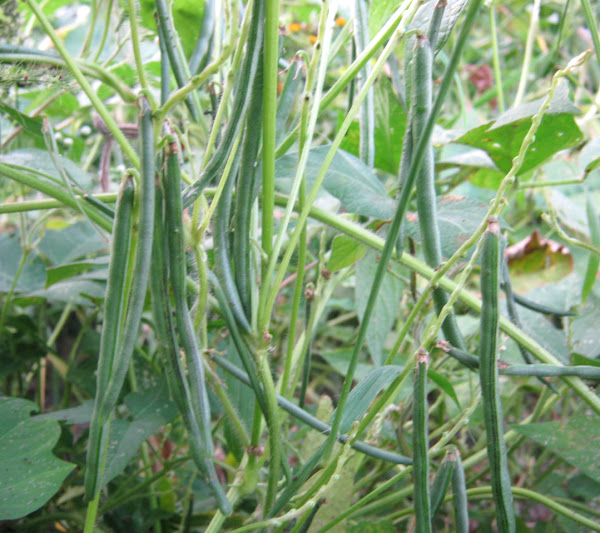
Prepare the Soil
One deep ploughing with 1-2 cross harrowing will be good for preparing the soil.
Remove most of the weeds from the land while preparing it for growing ricebean. You can add some organic contents into the soil while ploughing or harrowing.
For commercial production, you have to add some chemical fertilizers along with adding organic contents.
You should always use chemical fertilizers based on soil test results.
Generally 10-12 kg urea and 18-20 kg super phosphate will be required per acre.
Climate Requirements for Growing Ricebean
The ricebean is a warm-season crop. The plants grow well in 18 °C to 37 °C temperature. And 600-1500 mm annual rainfall is ideal for growing ricebean.
Best Time for Growing Ricebean
The ricebean is actually a kharif season crop. And first-third week of July month is considered as the best time for sowing ricebean seeds.
Choose Variety
There are several varieties of ricebean available to choose from. Some common varieties are BRS 1, PRR 2, RBL 1, RBL 6, RBL 35 and RBL 50. Consult with an agriculture specialist in your area for choosing the right variety for your business.
Purchase Seeds
Purchase seeds from any of your nearest market after choosing a good variety. The ricebean seeds should be easily available in your area.
Seeds per Acre
On average, you will need about 10-12 kg seeds per acre.
Planting
The ricebean seeds should be planted in rows. Space the rows to about 10-12 inches apart, and space the seeds to about 4-5 inches apart.
Sow the seeds to about 1 inch deep into the soil. Water lightly after sowing the seeds, and try to keep the soil moist constantly.
Caring
The ricebean plants generally don’t require additional care. Although taking additional care will help the plants to grow better and produce more.
Here we are describing more about the caring steps for growing ricebean.
Fertilizing: Additional fertilization is not required for growing ricebean. The plants will grow just fine if you have prepared the soil in above mentioned ways.

Watering: Irrigation is not required during monsoon. But you will need to apply irrigation 2-3 times in the post-monsoon period (when monsoon doesn’t occur on time or drought occurs).
Controlling Weeds: Sometimes weeds create major problems while growing any crop. Weeds generally consume nutrients from the soil, and as a result the plans suffer. So you have to control the weeds timely. Frequent weeding and hoeing are required for keeping the field weed free. 1-2 hoeing are required after 30-50 days of sowing for controlling the weeds. Mulching is also a very effective way to reduce soil temperature, and it will also help to keep the field free from weeds.
Pests and Diseases
Small larva, pod borer, blister beetle, lizard and larva are some common pests for the ricebean plants.
And common diseases of the ricebean plants are yellow leaves and leaf stem rotten.
Please consult with an agriculture specialist in your area for having good suggestion for controlling pests and diseases.
Harvesting
You can expect to start harvesting when about 80% of the pods turn brown in color.
Harvest ricebean only in the morning to avoid upsetting of the pod. The harvesting is done in small patches, because the plants are interlinked with each other.
Sun dry the grains after harvesting, and keep the seeds in fine containers.
Yield
Average yield can vary from place to place. Average yield of ricebean is between 200 and 300 kg per hectare.
Ricebean Nutrition
The ricebean is very nutritious and it plays a very important role in human, animal and soil health improvement. The seeds are good source of protein, essential amino and fatty acids, and minerals. Good luck!

